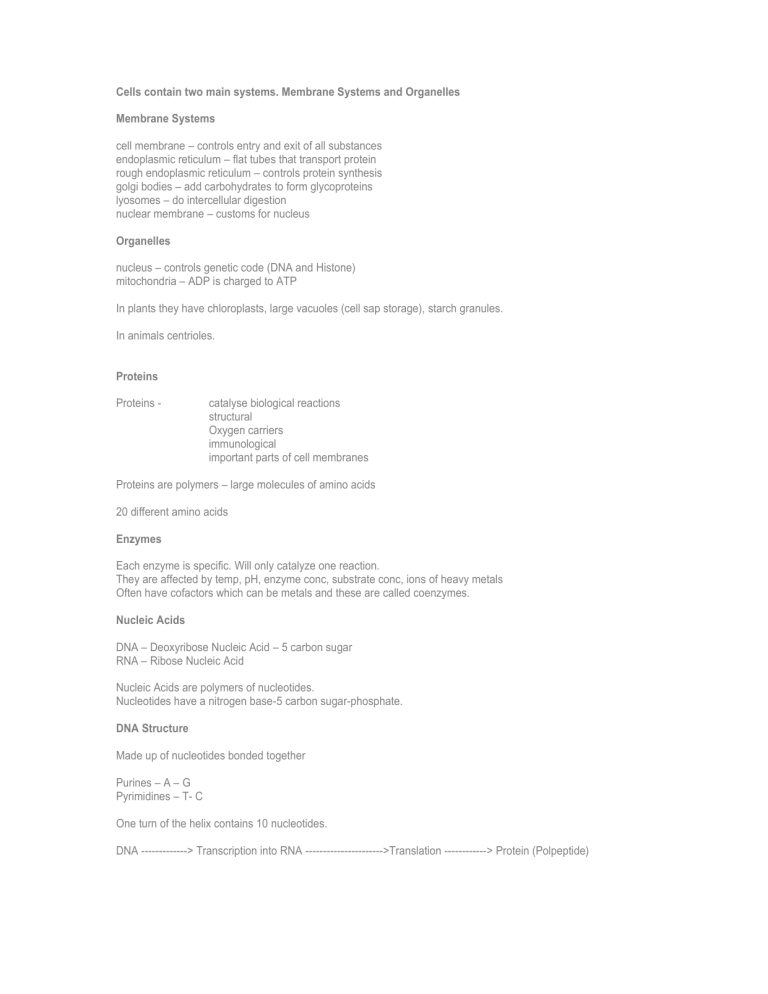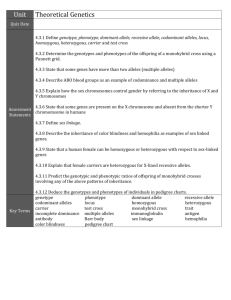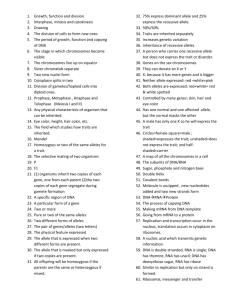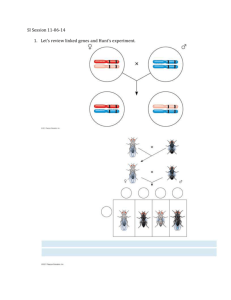biology revision

Cells contain two main systems. Membrane Systems and Organelles
Membrane Systems cell membrane – controls entry and exit of all substances endoplasmic reticulum – flat tubes that transport protein rough endoplasmic reticulum – controls protein synthesis golgi bodies – add carbohydrates to form glycoproteins lyosomes – do intercellular digestion nuclear membrane – customs for nucleus
Organelles nucleus – controls genetic code (DNA and Histone) mitochondria – ADP is charged to ATP
In plants they have chloroplasts, large vacuoles (cell sap storage), starch granules.
In animals centrioles.
Proteins
Proteins - catalyse biological reactions structural
Oxygen carriers immunological important parts of cell membranes
Proteins are polymers – large molecules of amino acids
20 different amino acids
Enzymes
Each enzyme is specific. Will only catalyze one reaction.
They are affected by temp, pH, enzyme conc, substrate conc, ions of heavy metals
Often have cofactors which can be metals and these are called coenzymes.
Nucleic Acids
DNA – Deoxyribose Nucleic Acid – 5 carbon sugar
RNA – Ribose Nucleic Acid
Nucleic Acids are polymers of nucleotides.
Nucleotides have a nitrogen base-5 carbon sugar-phosphate.
DNA Structure
Made up of nucleotides bonded together
Purines – A – G
Pyrimidines – T- C
One turn of the helix contains 10 nucleotides.
DNA -------------> Transcription into RNA ---------------------->Translation ------------> Protein (Polpeptide)
DNA Replication
IPMAT
Interphase – The chromosomes spread out into chromatin. The DNA replicates
Prophase – Chromatids condense to become visible under the light microscope. The nuclear membrane breaks down and the centrioles migrates to opposite sides to the cell. The nucleolus disappears.
Metaphase – The spindle forms. Fully condensed chromatids move to line up single file around the equator of the spindle. They are joined to the spindle by the centromeres.
Anaphase – The chromatids separate and pulled to the poles by the spindle. They are now called chromosomes.
Telophase – The cytoplasm constricts in animals or a wall grows down between the two daughter nuclei in plants.
The chromosomes start to unravel and disappear from view. A nuclear membrane reforms. The centriole divides.
The nucleoli reappear.
Protein Synthesis
RNA differs from DNA because
1.
Its sugar is ribose
2.
Uracil becomes Thymine
3.
Single strand instead of a helix.
4.
DNA is more stable than RNA
5.
DNA is much larger (a thousand to a million times)
Three types of RNA
Messenger RNA (mRNA) carries the genetic information from DNA to the ribosome. Arranged in 3 bases, a codon
Transfer RNA (tRNA) a clover leaf shaped molecule with a 3 base code. Anticodon (opposite to mRNA)
Ribosomal RNA (rRNA) makes the structure of the ribosomes.
Transcription – RNA polymerase is used to copy the template strand of DNA
Translation – The mRNA molecule passes through a slot in the ribsome where the message on the mRNA is traslated into a protein. The tRNA brings the appropriate amino acid up to the ribosomes. The anticodon on the tRNA matches with the codon on the mRNA. The new amino acid is joined to the polypeptide chain. As each new amino acid is joined to the polypeptide chain. As each new amino acid is joined, the ribosome nudges the mRNA strand along three ‘notches’ and the next tRNA falls into place.
Puffing is active RNA synthesis
Mendelian Genetics
Mendel’s law of segregation
The paired allele is seperated during gamete formation. So new alleles can combine to form new combos
Mendel’s law of independant assortment
That alleles were inherited independently. that the alleles maintained their identity and that their association with other genes were not changed.
Backcross or Test Cross
A test when the unknown genotype is crossed with a known recessive organism and depending on what the offspring are the unknown genotype can be found.
50% of each possibility (hetero and homo-dominant) then the unknown is heterozygous
100% of Heterozygous then the unknown was homo-dominant
Incomplete Dominance
When a particular allele is not dominant over the other and vice versa. It is called incomplete dominance. At the same time the heterozygous form is a combination of the two alleles.
R = Red r = White
Codominance
RR = Red rr = White Rr = Pink
Same as incomplete dominance except both alleles are expressed.
BB (Black Spots) Bb(Black and Orange Spots) bb(Orange spots)
Overdominance
When the heterozygous form is not within the range of the homozygous dominant to recessive.
TT (Tall) Tt(Even Taller!) tt(short)
Lethal Genes
When a particular allele combination causes the organism to die e.g Achondroplastic dwarfism is a dominant trait in which an individuals arms and legs remain short. AA is lethal
AA (died)
Multiple Alleles
Blood Group
Aa (dwarf) aa (normal)
Dihybrid Crosses
9:3:3:1 When a heterozygous dihybrid crosses.
The Dihybrid Backcross
If you cross a organism with both alleles in recessive form with a heterozygous for both alleles you will get a
1:1:1:1 ratio. If you cross it with a homo-dom. Then you will get offspring dominant for both alleles.
Interaction of Genes
Epistasis
An example is when one gene controls whether the gene is expressed or not. For example In the coding for mouse fur coat colour.
One allele is black when dominant (B); brown is recessive (B). However, another allele allows the coat colour to show when dominant (C) but not when recessive (c)
The ratio then become 9:4:3 black:white:brown
Complementary Genes
When two alleles have to be dominant form for the colour to be expressed.
9:7
P = Purple p = White
C = Colour c = no colour
The Barr Body
It is one of the inactive X chromosomes in the females karyotype.
Sex-linked Genes
In mammals part of the X chromosome is homologous with the Y chromosome but the Y is much smaller that the
X, so there are parts of the X chromosome that have no matching part of the Y chromosome. Any gene carried on the non-homologous part of the X chromosome is called sexlinked, and the Y chromosome is genetically empty for that characteristic.
Use X Y when working with sex-linked genes.
Variegation
When female heterozygous shows patches of one colour in the midst of other areas of another colour. e.g. Calico and Tortoise shell- coloured coats.
Linkage
They are located on the same chromosome (genes)
Crossing Over
Crossover Value = number of recombinants X 100 total number of offspring
Gives an idea of the distance from that gene to another by using the COV in Chromosome Mapping.
Pleiotropy
When genes coding for proteins have multiple effects e.g. (Sickle Cell Anameia not only codes for the lack of oxygen storage but for resistance against some forms of malaria)
Sickle-Cell Anaemia
Codominance with normal blood allele. So there is some sickle celled blood and normal blood cells. Giving resistance against malaria,
The Effect of the Environment on the Expression of a Gene
Internal Environment
Modifier Genes – sometimes the expression of a gene at one locus is affected by alleles present at another locus
Sex-limited genes – there is rare type of cancer that affects the uterus obvisouly ths is ‘limited’ to females
Sex-influenced – where sex hormones play their part
External Environment
Starvation or Malnutrition can affect the proper development of both plants and animals
Lack of light can prevent the formation of chlorophyll or development of seedlings. Light also affects the skin colour
Temperature can affect enzyme systems and fur colour in Himalayan rabbits and Siamese Cats.
Ratios
Monohybrid
3:1
1:2:1
1:1
2:1
Aa X Aa
Aa X Aa
Aa X aa
Aa X Aa
A dominant to a
Incomplete or Codominance
Backcross
Lethal Genes
Dihybrid
9:3:3:1 AaBb X AaBb
1:1:1:1 AaBb X aabb
9:3:4 AaCc X AaCc
Heterozygous cross
Dihybrid BackCross
Epistasis
9:7
15:1
Hybrid Vigor
AaCc X AaCc Complementary
Duplicate
Heterozygous advantage. Better to have both enzymes. Overdominance.
Evolution
Types of Natural Selection
Stabilizing Selection – selects for the average phenotype
Directional Selection – selects for a particular extreme phenotype
Disruptive Selection – this selects for the extreme phenotypes and not the average
Genetic Drift
This is when there is a change in allele frequencies due to chance. Usually happens in small interbreeding populations.
Founder Effect
Is when some organisms of a species move into a new area with only a small portion of the available allele frequencies. When they become isolated they descend from their ancestors. The Founder Effect is when these new organisms have very different gene frequencies to the same regular species.
Mutation
Ultimate source of variation that can change equilibirum. It presents new possibilities that can be acted on by natural selection. Most mutations are harmful and recessive.
Gene Migration
When immigrants arrive from another popoulation adding different genes to the existing gene pool.
Mutation and immigration increase genetic variety
Emigration and genetic drift decrease genetic variety.
Speciation
The formation of a new species. A species is defined as a group of intebreeding individuals to produce fertile offspring and belong to the same gene pool.
Speciation Occurs as follows
Reduced selection pressure. Species move into a new where competition does not exist. Many ecological niches unfilled.
A population explosion follows which results in increased variation as most offspring surviove, so alleles that were previously selected against are now free to be expressed.
Migration into a new environments on the borders of the range give rise to geographical isolation.
Some of the isolated sub-species develop genetic and chromosomal differences that will no longer allow interbreeding wih the parent population, so it is now genetically isolated, and thus a new species.
Cline
When we move in a particular direction – e.g down a country – through a range of a species and find that there is a continuous increase or decrease in some charactersitics between adjacent populations, this pattern of variation is called a cline.
Isolating Mechanism
Geographical Barriers
Oceans, rivers, mountain rnages, deserts.
Ecological Barriers
Different adaptions to envirmental factors e.g. humidity and temp
Reproductive Barriers
Prezygotic Barriers
Habitat differences
Differences in breeding times
Mechanical Differences (genitalia)
Behaviour Patterns (Courtship behaviour, rituals, mating calls etc.)
Biochemical Incompatibitility (sperm will not survive the reproductive duct of another organism)
Postzygotic Barriers
Hybrid Inviability – zygote forms but does not develop properly
Hybird sterillity – a hybrid forms but is sterile. mule
Hybrid breakdown – hybrid offspring are fertile but produce many infertile or inviable offspring.
Polyploidy – The abrupt formation of a new species.
Isolation by Time
A species that disappeared one million years ago obviously cannot interbreed with a species living today.
Patterns of Evolution
1.
Sequential Evolution – This result of changes between one generation and the next.
2.
Divergent Evolution – When two species have evolved from a common ancestor
3.
Adaptive Radiation – when a common ancestor population diverges into different forms because of the adaption to numerous ecological niches
4.
Convergent Evolution - When two species of different ancestors look similiar because of the same habitat
5.
Parrallel Evolution - this is the volution of similiar features, not found in the ancestral form, found in two or more closely related species.
Evidence for Evolution
1.
Comparative Anatomy – classing organisms into groups with similiar anatomy, physiology, bichemistry and behaviour. Usually these groups coincide. analogous – features that look the same but are from different ancestral origins homologous – features that look different but are from same ancestral origins.
2.
Fossil record
3.
Biogeography
4.
Vestigal Organs
5.
Embryology – the early embryonic stages of all vertebrates are very similiar
6.
Biochemical evolution – chemistry of animals and plants is so similiar (protein differences)
7.
Domestication of plants and animals (by selective have produced different varieties.








